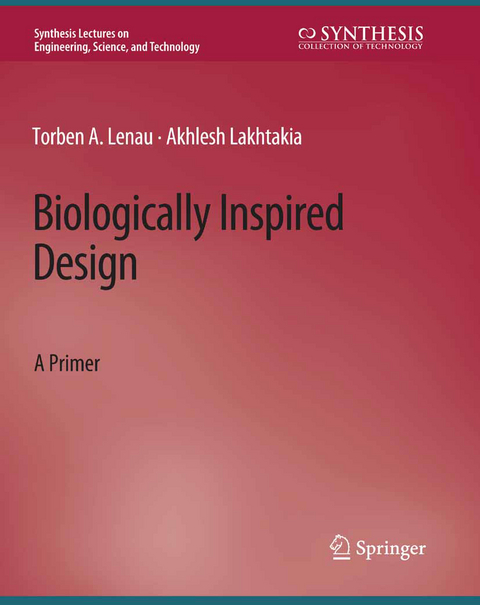
Biologically Inspired Design
Springer International Publishing (Verlag)
978-3-031-00963-1 (ISBN)
As the existence of all life forms on our planet is currently in grave danger from the climate emergency caused by Homo sapiens, the words "sustainability" and "eco-responsibility" have entered the daily-use vocabularies of scientists, engineers, economists, business managers, industrialists, capitalists, and policy makers. Normal activities undertaken for the design of products and systems in industrialisms must be revamped. As the bioworld is a great resource for eco-responsible design activities, an overview of biologically inspired design is presented in this book in simple terms for anyone with even high-school education.
Beginning with an introduction to the process of design in industry, the book presents the bioworld as a design resource along with the rationale for biologically inspired design. Problem-driven and solution-driven approaches for biologically inspired design are described next. The last chapter is focused on biologically inspired design for environment.
Torben A. Lenau is an Associate Professor in design methodology, material selection, and biomimetics at the Department of Mechanical Engineering, Danmarks Tekniske Universitet. His research interests are creative methods in product design with focus on materials, manufacturing, and biomimetics (inspiration from nature). He has conducted a number of industrial case studies on how to integrate biomimetics in product development and has developed the biocards used to communicate design principles found in nature. Furthermore, he studies natural occurring photonic structures in order to develop new surface coatings based on structural colors.Akhlesh Lakhtakia is Evan Pugh University Professor and the Charles Godfrey Binder (Endowed) Professor of Engineering Science and Mechanics at The Pennsylvania State University. He received his B.Tech. (1979) and D.Sc. (2006) degrees in Electronics Engineering from the Institute of Technology, Banaras Hindu University, and his M.S. (1981) and Ph.D. (1983) degrees in Electrical Engineering from the University of Utah. He was the Editor-in-Chief of the Journal of Nanophotonics from its inception in 2007-2013. He has been elected a Fellow of the American Association for the Advancement of Sciences, American Physical Society, Institute of Physics (UK), Optical Society of America, SPIE-The International Society for Optics and Photonics, Institute of Electrical and Electronics Engineers, Royal Society of Chemistry, and Royal Society of Arts. His current research interests include: electromagnetic fields in complex mediums, sculptured thin films, mimumes, surface multiplasmonics and electromagnetic surface waves, forensic science, and engineered biomimicry.
Preface.- Acknowledgments.- Definitions.- What is Design?.- Engineered Biomimicry: Solutions from the Bioworld.- Rationale for Biologically Inspired Design.- Problem-Driven Biologically Inspired Design.- Solution-Driven Biologically Inspired Design.- Biologically Inspired Design for the Environment.- Authors' Biographies.
| Erscheinungsdatum | 06.06.2022 |
|---|---|
| Reihe/Serie | Synthesis Lectures on Engineering, Science, and Technology |
| Zusatzinfo | XIX, 95 p. |
| Verlagsort | Cham |
| Sprache | englisch |
| Maße | 191 x 235 mm |
| Gewicht | 236 g |
| Themenwelt | Sozialwissenschaften ► Pädagogik ► Berufspädagogik |
| Technik ► Maschinenbau | |
| ISBN-10 | 3-031-00963-0 / 3031009630 |
| ISBN-13 | 978-3-031-00963-1 / 9783031009631 |
| Zustand | Neuware |
| Haben Sie eine Frage zum Produkt? |
aus dem Bereich


